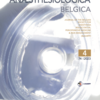Reliability and validity of the Dutch version of the Parents’ Postoperative Pain Measure (PPPM-Dv)
Pediatric, postoperative pain, reliability, validity
Published online: Dec 21 2023
Abstract
Background: Pain is often poorly managed in pediatric daycare surgery. The Parents’ Postoperative Pain Measure (PPPM) is available as parent report to rate children’s pain at home after surgery and is a reliable and well validated tool.
Objectives: To establish the reliability and validity of the Dutch version of the Parents’ Postoperative Pain Measure (PPPM-Dv) to assess postoperative pain among children aged between 2 and 12 years during five postoperative days at home.
Design: cross-sectional cohort study.
Setting: ZNA Queen Paola’s Children’s Hospital.
Methods: 120 children were included. Stratification was done according to age (2-5 and 6-12 years) and three surgical categories. Parents socioeconomic status (SES) and religion were registered. For all children, parents recorded pain using the PPPM-Dv and Numerical Rating Scale (NRS-11) twice daily for five days. Children between 6-12 years were asked to rate their experienced pain using the Faces Pain Scale-Revised (FPS-R).
Results: From 120 children included 91 (76.6%) families completed pain diaries. Reliability across the five-day postoperative period, Cronbach’s α for PPPM-Dv was .70 to .90. Correlations between PPPM-Dv and NRS- 11/FPS-R were strong (.81 and .61). Using NRS-11(≥4) as binary classifier (yes/no), ROC analysis identified a PPPM-Dv score >2 as cut-off, with a sensitivity of 89% and specificity of 82%. With FPS-R (≥4) as binary classifier (yes/no), ROC analysis identified a PPPM-Dv score >2 as cut-off (sensitivity:88%; specificity:79%). PPPM-Dv scores decreased over time and followed a similar pattern as the NRS-11 and FPS-R scores. Generalized Estimation Equations (GEE) showed that higher PPPM-Dv scores were associated with a more painful surgical category and were independent of SES and religious affiliation.
Conclusion: These data provide evidence for the reliability and validity of the PPPM-Dv. This can be a helpful tool to identify pain in children after daycare surgery at home in a Dutch speaking population.
Trial registration: https://doi.org/10.1186/ISRCTN12813822
